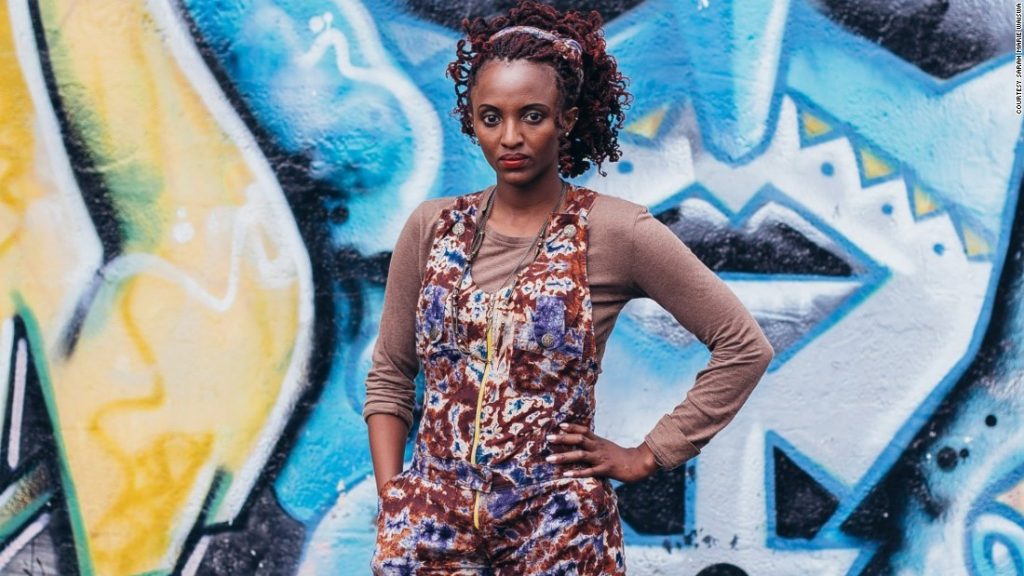Alienation is the isolation of knowledge from the public domain in terms of the goods they purchase and produce as well. A young man who has gone through tertiary education and has studied business administration is less likely to know the negative impacts fashion has in regards to sustainability.
Fashion is used to determine how people live and what matters in people’s lives. Nowadays people have four times the amount of clothes in their wardrobes than the people born in the nineteenth century. What most people do not know, is that hundreds of tons of clothes are thrown away every year. The fashion industry is growing and Africa has not been left behind with countries such as Nigeria and South Africa embracing the trend. A lot of information is left missing when setting up these fashion industries. Study shows that 20% of the global waste water is produced by textile and fashion industries. In addition, ten percent of global carbon emissions are produced in the apparel industry.
Developed countries such as United Kingdom and Britain have embraced fast fashion due to the ever-rising trends and competition from various brands. Fashion fanatics change their sense of fashion every now and then. Their unwanted clothes present in the wardrobes make their way to the African soil as second-hand clothes commonly known as ‘mitumba.’ Kenya, Benin and Ghana are key importers of these clothes. What we fail to question is the consequences of these second-hand clothes in regard to sustainability. Fast fashion is designed for lower quality, no one is meant to keep them. In short, Africa serves as a dumping site for the waste in fashion industry from developed countries.
Once these clothes make way into our market the demand is huge. They are appreciated as they seem trendy and are cheaper than those made by local textile industries. But exactly what are we buying beyond what pleases the eye?
It is the high time we think of fashion in a different way. Fashion has a huge impact on the environment. The polyesters and synthetic fabrics are mostly made from petroleum. This includes the eco-friendly fabric clothes made from recycled plastics and waste materials. Most ‘eco-friendly’ practices in the fashion industry cause more harm than good. Cleaning of these clothes for example sees the release of half a million tons of micro-fibre to water bodies. The same micro-fibres eventually find their way to our plates through the food chain.
In order to prevent mildew in the transportation of clothes, formaldehyde is used. This chemical helps reduce the presence of wrinkles in clothes. Bales that make their way to the African soil contain this chemical. Consumers who buy these clothes and wear without washing experience head aches and sore throats as a result.

lady in second hand clothes. image source: google.com
As retailers continue to produce new collections, more and more second-hand clothes will continue to make their way to Africa. In 2018, East African countries- Kenya, Tanzania, Rwanda and Uganda were out to effect a ban on importation of second-hand clothes by 2019. Unfortunately, the implementation has only taken place in Rwanda. Given that only a minority can afford clothes from textile industries in Africa upcycling should also be introduced.
Upcycling entails the use of a fashion product multiple times- different pieces of clothes are stitched to make a whole new cloth. However, this serves as a huge appeal in western countries. The upcycled clothes, do not reach out to the upper-class audience in the African society, making it hard to get necessary funds in making this type of produce. The upcycling start-ups in Africa appeal to the foreigners, gets support from western designers and end up in online stores for international distribution.
The Government should also regulate the policies that are centred on second-hand clothing importation to reduce an oversupply of the same. It is time we out aside the business model that seeks to promote profit over the ecological principles.
Consumer behavior plays a huge role. Stitching was in the past passed down from mothers to their daughters but that has changed overtime due to factors such as modernization. When ‘mitumba’ clothes get torn as a result of their short ‘life span’ techniques such as knitting, and stitching should be embraced. This care of the clothes we already possess will reduce waste caused by clothing.




